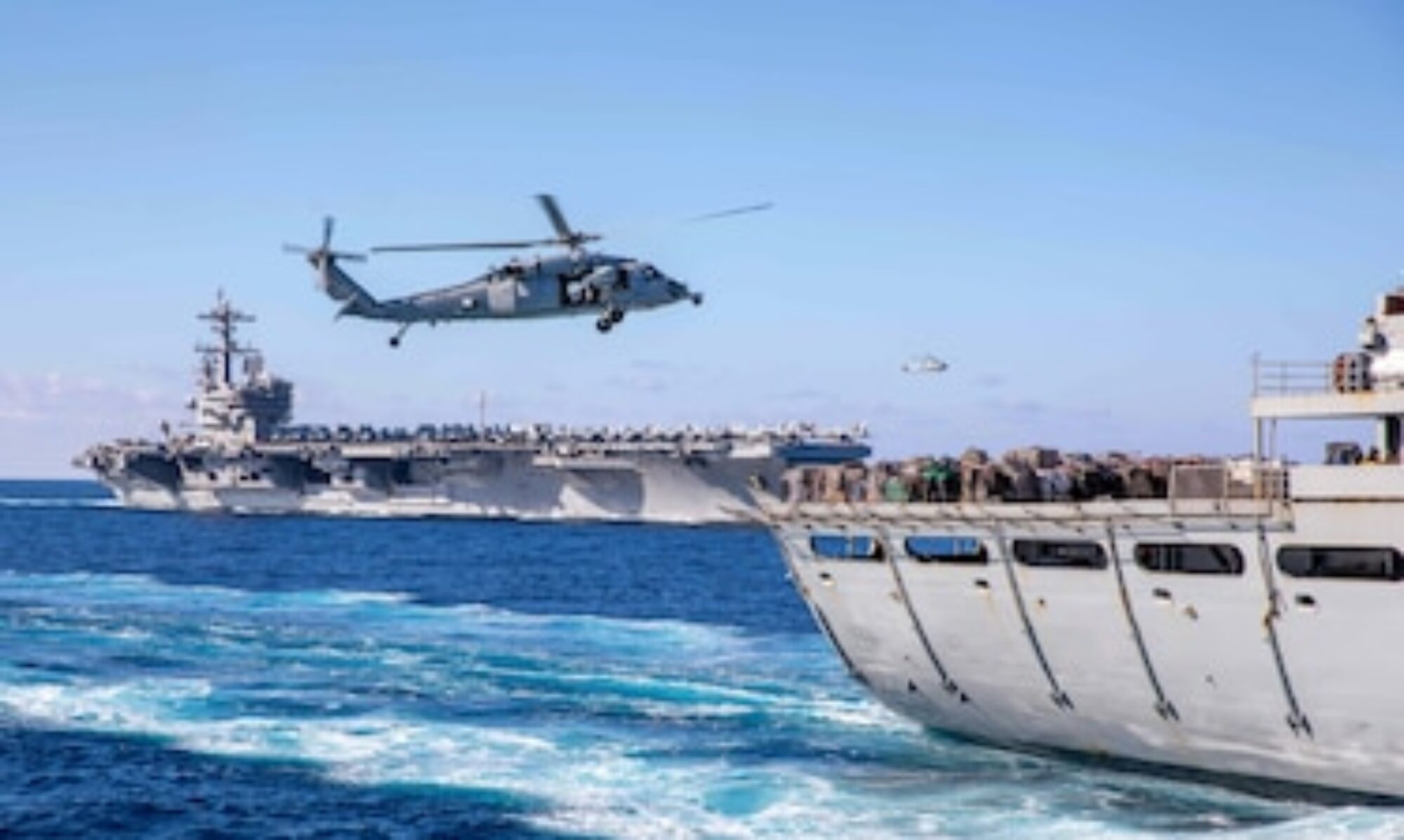
Welcome to Episode 3
Dear Members and Friends,

As Thanksgiving 2023 approaches, a time for reflection and gratitude, I find myself moved by the stories of dedication, sacrifice, and courage that we’ve had the honor of sharing through our platform. As the founder of the Americans for a Stronger Navy, it has been my privilege to bring to light individuals like Dan Maloney, whose life and service to our nation exemplify the best of the American spirit.
This Thanksgiving, I want to extend my heartfelt thanks to each of you – for your support, and your belief in our mission. Your participation not only enriches our community but also fuels our commitment to preserving and celebrating these important narratives.
The stories we share are more than just accounts of military service; they are personal journeys that reveal the depth of human resilience, the strength of character, and the profound impact one individual can have. Dan’s story, among many others, is a testament to this. His experiences, challenges, and triumphs offer us a window into a life dedicated to something greater than oneself, inspiring us all to reflect on our own paths and contributions.
As we gather with our loved ones this holiday season, let us remember and honor the sacrifices of those who have served our nation. Their stories are not just a part of our history; they are a beacon that guides our future.
I encourage each of you to take a moment to share your stories or the stories of those you know. Every voice matters, every story adds a unique thread to the rich tapestry of our collective history. Let’s continue to build this legacy together, fostering a community where every sacrifice is remembered, and every story is cherished.
Wishing you and your families a warm, joyful, and reflective Thanksgiving.
With gratitude, Bill
Dan Maloney’s Continuing Story
In the inaugural episode of our podcast series, “The Lone Sailor: A Testament to Service Beyond the Bronze,” we embarked on a profound exploration of the Lone Sailor statue—a bronze testament to the service and sacrifice of sailors globally.
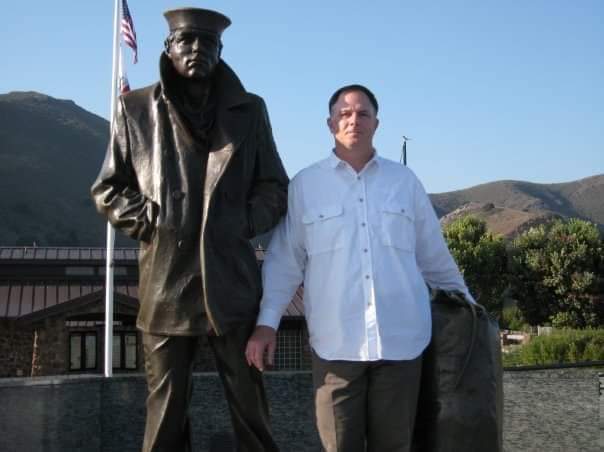
We introduced Dan Maloney, whose face remarkably inspired the statue, and delved into the creation process, the artist’s vision, and the intricate approval journey the statue underwent.
This episode promised a deeper dive into Maloney’s life, exploring his shared memories, challenges, and how his journey intertwines with the story of the Lone Sailor, including a unique segment featuring written questions and answers directly from Dan.
As teased in our previous episode, today we set sail into the captivating life story of Dan Maloney, the man whose visage inspired the Lone Sailor statue.
The Origin of The Lone Sailor
Dan shared the history and significance of The Lone Sailor statue, dating back to its inception in the 1980s as an initiative by the U.S. Navy Memorial Foundation. The statue stands as a tribute to sailors’ dedication, sacrifice, and contributions to the country.
The Early Years: Foundations of a Sailor
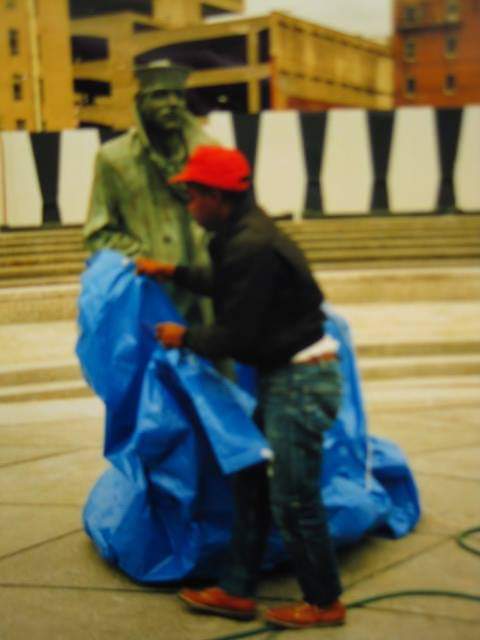
In this episode, you’ll journey through Maloney’s early aspirations, his unexpected entry into the Navy, and the diverse experiences that shaped him into the figure immortalized in bronze. We’ll explore his motivations, the intricacies of his recruitment, and the unique circumstances that led him to embrace the Navy as a lifelong commitment.
Dan’s story is a compelling narrative of naval service, embodying adaptability, determination, and the art of navigating life’s unexpected courses.
The Lure of the Navy
Dan described the allure of the Navy as a blend of patriotism, a sense of adventure, and the promise of personal development. The Navy provided an opportunity to be part of something bigger than oneself, offering both challenges and rewards that resonate on a personal and national level.
What inspired your initial decision to join the Navy instead of pursuing your initial dream of becoming a veterinarian, and how did the advice and stories from a Cryptologic Technician influence your choice, especially regarding the nuclear power program?
Answering the Call: Joining the Navy
After high school, I was accepted to the University of Maryland with dreams of becoming a veterinarian. My older sister was in her junior year at Maryland and was struggling with her mounting student loan debt. I had a good job as the manager of a busy liquor store on Route 1 in Laurel, MD but was still living with my mom. It quickly became evident that I needed to get out from under her roof and rules. One of my cashiers was the wife of a second class petty officer. He was a Cryptologic Technician (Interpretive) brushing up on his Russian language skills at Fort Meade.
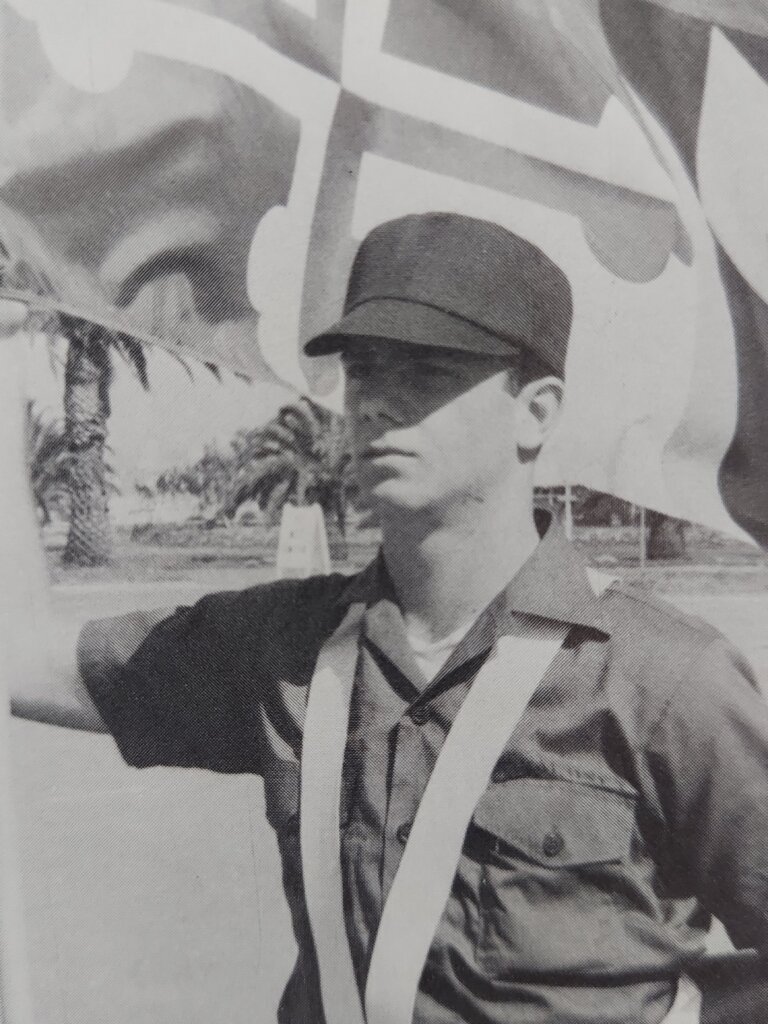
One evening over beers, in response to me talking about my future plans, he recommended I join the navy. He also specified that I join the nuclear power program (more money) and join the drill company in boot camp to avoid washing dishes during service week. He told me stories of guys who got everything they needed from the navy and saved all of their paychecks in a shoebox. I never met anyone like that.
Can you share your thought process behind choosing the Navy over other military branches, particularly focusing on the unique opportunities presented by the nuclear power training?
Nuclear power training was not available anywhere else and I looked at the casualty numbers from past wars and determined I was more likely to survive in the navy if we went to war again. I only intended to do the six years required to go into nuclear power and then get out and work in the lucrative civilian nuclear industry. While I was in boot camp, the accident at Three Mile Island occurred and that was when I began thinking about staying in the navy.
Trials of Recruitment
The recruitment process, as narrated by Dan, tested the mettle of prospective sailors. It was an initiation into the Navy’s ethos, demanding both physical endurance and mental resilience. From rigorous screenings to the anticipation of a new life chapter, recruitment epitomized the start of the naval odyssey.
When and where did you enlist?
I enlisted in January 1979 after visiting the local recruiter.
Tell me about the recruitment process? Did it go smoothly?
The Rigors of Recruitment
The process was very fast. I told the recruiter I wanted to be a “nuke” and, spying my shoulder length hair and scruffy army jacket, he told me to slow down because I needed to take the Armed Services Vocational Aptitude Battery test first and, if I did OK on that, he would then administer the Nuclear Field Qualification Test. I did very well on both tests and the recruiter’s demeanor changed immediately because he was excited by the extra credit he would receive for inducting a nuke. He showed me a video about the nuclear power program that was narrated by William Shatner and featured the aircraft carrier Enterprise. My physical went well and I was informed that I would be sent to Great Lakes for boot camp.
I pushed back and said I wanted to go to San Diego because it was too cold in Illinois in February and I had been to Orlando on vacation already. They didn’t want to risk losing a nuke so my request was granted. I took my first plane ride three weeks later.
Boot Camp
Boot Camp was a transformative phase for Dan. It distilled the essence of discipline, teamwork, and the naval ethos into intense training sessions. Through sweat, toil, and camaraderie, recruits evolved from novices to adept sailors, ready for the vast seas.

My first twenty-four hours in the navy were remarkable. On the plane trip to San Diego, I met some sailors returning from leave. They were kind enough to offer me a ride to the base so I didn’t stick around at the airport for the Recruit Training Command (RTC) bus as directed. My new friends dropped me off at the Naval Training Center gate and bid me good luck. The gate guard was flummoxed because he didn’t know what to do with me. He contacted the RTC and they sent somebody to come gather me up. That was when I received my first ass chewing in the navy. I was instructed, very forcefully, that my days of showing any initiative were over. I was brought to the barracks where most of the new recruits were fast asleep because it was past midnight. I was shocked to see clothing draped everywhere. It seemed very untidy for the military. I also noticed a person walking around the barracks in a very deliberate manner. I didn’t trust him so I placed my wallet under my pillow. I was clueless about the role of the roving watch. Less than an hour later, he woke me up and said I had the next watch. I had no idea what he was talking about so I exclaimed, “I haven’t even gotten my hair cut yet!” and demanded to see the “Captain.” A senior petty officer soon resolved the situation and told me to go back to sleep.
What were your initial impressions and experiences during boot camp? Can you share any particular challenges or memorable moments that stood out?
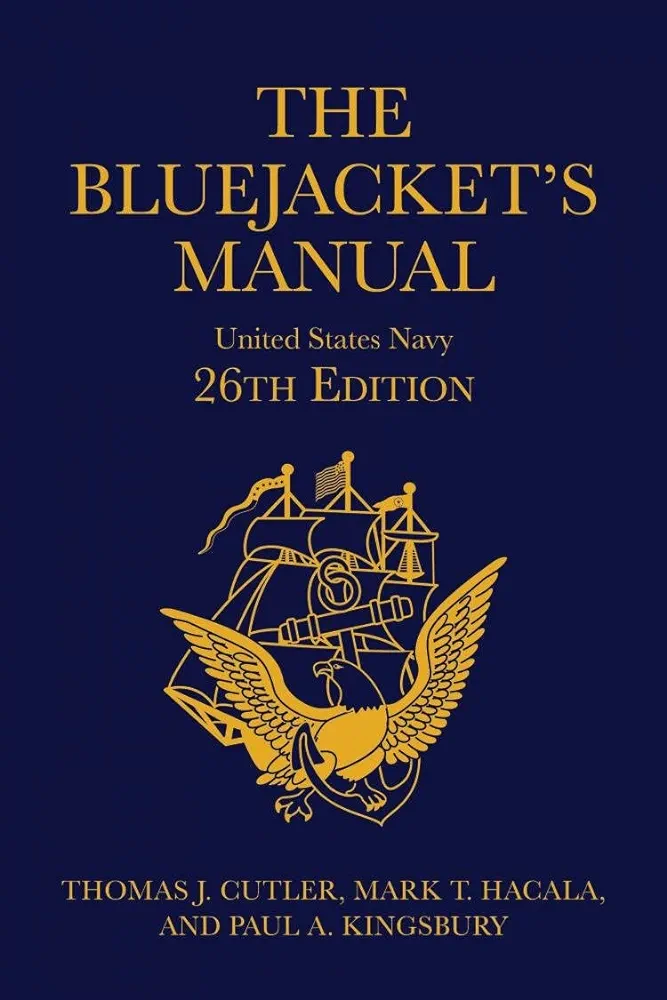
I experienced the usual culture shock that all recruits go through in the first couple of weeks. I quickly realized that I had more life experience and street smarts than many of my fellow recruits. I thought the food was decent and enjoyed the occasional smoke break. I thought it was odd we were prohibited from using the urinals but soon learned it was the savvy move of an experienced Company Commander (CC) to keep the urinals pristine for barracks inspections.
There were two memorable events that almost derailed my navy career before it even began. The first event involved the difference between boxers and briefs. I was issued boxers while it seemed everyone else had been given briefs. The boxers were very blousy and difficult to stow neatly in the locker no matter how many times I ironed them with my Blue Jacket Manual. The boxers were preventing me from passing locker inspections and I quickly tired of being severely reprimanded by my CC. After a week of that, I decided I was done. I told the CC I didn’t care if I had to go to Leavenworth, I wanted out of the navy. It was a weekend so the CC arranged for me to talk to the chaplain via the telephone. There was another recruit who wanted out too so he joined us at the duty office. He talked to the chaplain first and started bawling about being homesick. I thought he sounded a little pathetic. When my CC said it was my turn I said, “That’s OK, I’m good. I’ll see you on graduation day.” That night, I snuck into the head and got my boxers nice and damp before folding them. The folds held perfectly even after drying. I wore the same pair of boxers for the remainder of boot camp and passed all subsequent locker inspections.
The second event involved an argument and on-going conflict with another recruit. He was in the army before so everyone called him Sarge. He was an imposing man and a few years older than most of us. He fancied himself a bully. He joined under the buddy program and his buddy was a chubby and lippy kid who derived his swagger from his association with Sarge. Sunday mornings provided the only free time we got in boot camp. That time was set aside for writing letters to loved ones and we were allowed to listen to the radio. The Recruit Company Commander (RCC) was the only recruit allowed to touch the radio. Sarge violated that rule and changed the radio station to his liking. That made many of us unhappy and loud arguments ensued. Sarge tried to bully us but I wasn’t about to take any of his nonsense. He was bigger than me but I also stood at 6’2” and 190 pounds. I did not back down. We were separated by the CC and directed to explain what happened. Sarge lost his spot in our drill company and was reassigned to a regular company that would be working in the galley the following week. Sarge was relaying threats to me via his buddy. During his week in the galley, Sarge would stand behind the silverware holding a knife in front of his face and glare at me while I moved down the line. Like most bullies, he was all talk. After graduation, I approached him and his buddy in the enlisted club and asked about his threats. He quickly said he didn’t want any beef and that was that. Welcome to the navy!
How did your mom feel about your decision to join the Navy?
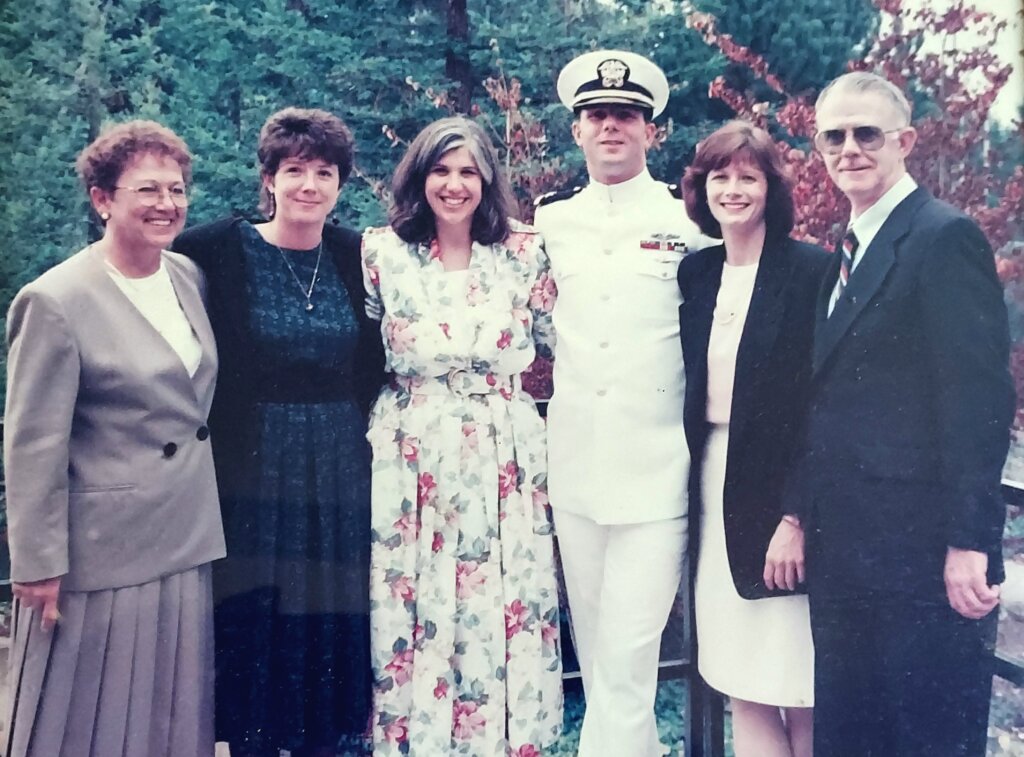
She was a little shocked about how soon I would be leaving but was overall proud. She had always wished I would go to the Naval Academy so she was definitely pro-Navy. My involvement as the model for the Lone Sailor and commissioning as an officer has made her immensely proud. My late father was very proud of my accomplishments too. He had served in the army and the National Security Agency so he understood selfless service better than most.
What duties did you perform?
Life at Sea: The Submarine Experience
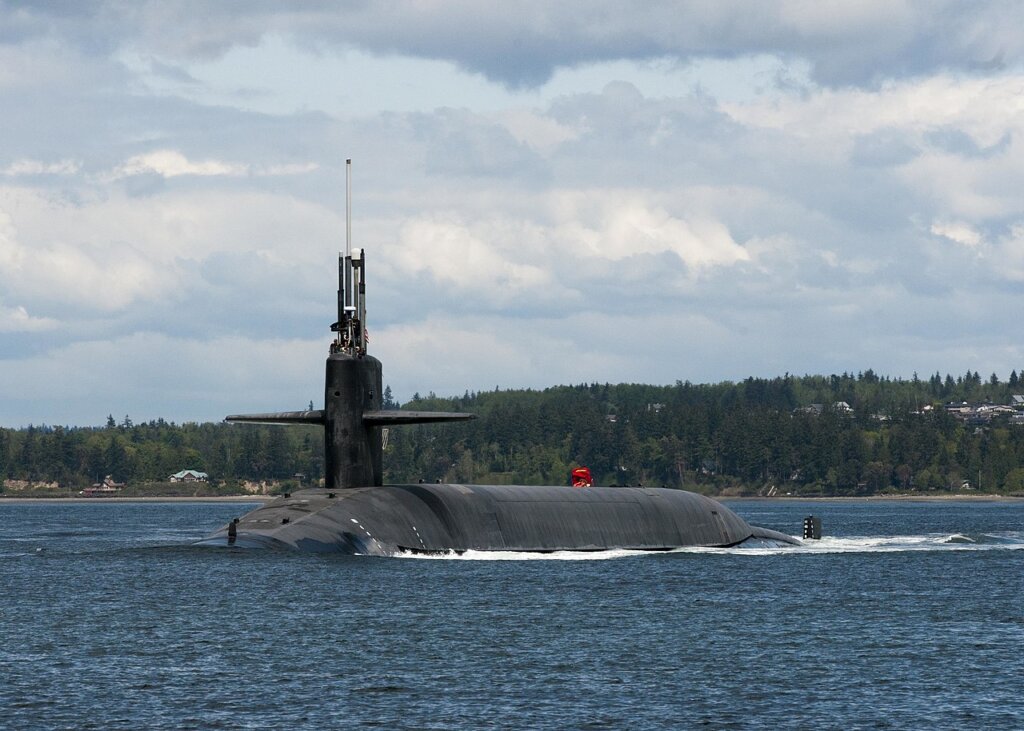
As a nuclear-trained Machinist Mate, I was responsible for operating and maintaining the nuclear reactor and steam plant that drives the main propulsion turbines and the electrical generating turbines. I also operated the evaporator that boiled seawater to create fresh water. I could make 12,000 gallons per day. I operated and maintained four 200-ton air conditioning plants that cooled the entire submarine and all electrical equipment.
Sea Tales and Specialties
Dan regaled with tales from the deep blue, from harrowing storms to moments of camaraderie under the vast sky. Each sailor had a specialty, be it navigation, engineering, or communications, ensuring the smooth sailing of the ship and fostering bonds of brotherhood.
Can you describe the various roles or positions you held during your time in the Navy? Where were you stationed, and what were some of your primary responsibilities in these roles?
1979: Machinist Mate “A” School, Great Lakes, IL (Advanced to MM3)
1979: USS LEXINGTON CVT-16, Pensacola, FL
1980: Naval Nuclear Power School. Orlando, FL (Advanced to MM2)
1980: Nuclear Power Training Unit (NPTU), Trident (S8G) Prototype, West Milton, NY
1980-1983: Instructor Duty NPTU, West Milton, NY (Advanced to MM1)
1983-1984: Pre-Commissioning Unit ALABAMA, Electric Boat Shipyard, Groton, CT
1984-1989: USS ALABAMA SSBN-731 (Gold), Bangor, WA (Selected as Sailor of the Year 1988 for ALABAMA and Submarine Group Nine)
1989-1992: Trident Training Facility, Bangor, WA (Advanced to MMC and ENS and certified as a Master Training Specialist) (Selected as Engineering Instructor of the Year 1991)
1992-1997: Naval Reactors Representatives Office, Pearl Harbor Naval Shipyard (Advanced to LTJG and LT)
1997-2000: Fleet Maintenance Officer, Commander, Submarine Force, US Pacific Fleet, Pearl Harbor Submarine Base
2000-2003: Maintenance Officer, Naval Submarine Support Command, Pearl Harbor Submarine Base (Advanced to LCDR)
2003-2004: Operational Type Desk Officer, Commander, Submarine Force, US Pacific Fleet, Pearl Harbor Submarine Base (Retired from Active Duty)
2005-Present: Modernization Program Manager (GS-13), Commander, Submarine Force, US Pacific Fleet, Pearl Harbor Submarine Base
Could you share about any specialized or extra training you received during your time in the Navy, and how it impacted your naval career?
Climbing the Ranks: From Sailor to Leader
In addition to Nuclear Training, I received specialized instruction to better understand the theory, operation, and maintenance of the various equipment I was responsible for on the submarine. I also received instruction in quality assurance, curriculum development, and lathe operation. Continuing training on reactor plant theory, operation, and casualty response is a daily occurrence when assigned to an operational reactor whether ashore or at sea.
Can you describe the process of how assignments were chosen in the Navy? Did you have any say in selecting your initial placement or specialization, and how did that decision come about?
I graduated #1 in my class at the Trident S8G prototype at NPTU and was picked up as an instructor for a three year tour. Wanting to stay on Trident submarines, I volunteered to join the initial manning of the submarine PCU ALABAMA undergoing new construction at EB. After new construction, I opted to do back-to-back sea tours on USS ALABAMA. I chose my shore duty at the Trident Training Facility. Upon receiving my commission and acceptance as a member of the Naval Reactors staff, I was assigned to the field office at Pearl Harbor Naval Shipyard. This was the first time I did not get my first choice. I wanted to stay in Washington State but was given my third choice (Hawaii). Once I decided Hawaii would be my forever home, I successfully negotiated Hawaii for my last three active duty assignments. I was thrilled when I landed a federal job at my last duty assignment.
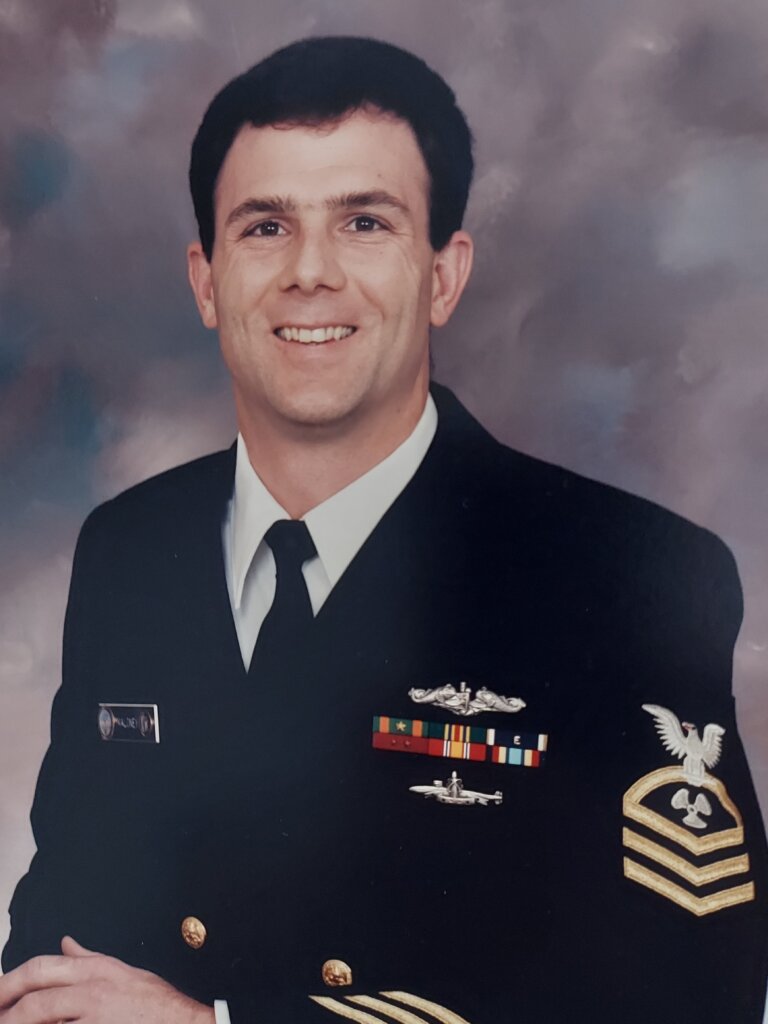
Life Enlisted
Life enlisted was characterized by a structured regimen, responsibilities, and an unyielding commitment to duty. Beyond the tasks, it was a life enriched by bonds forged in adversity, the pride of service, and the continuous pursuit of personal and professional growth.
Reflecting on your naval career, with its unique challenges and rewards, could you delve into what made your time in the nuclear power field particularly fulfilling? How did the experience shape your journey, especially with significant milestones like becoming a Chief Petty Officer and receiving a Limited Duty Officer commission?
It was very rewarding. Nuclear Power training is a demanding pipeline and many do not make it through. The nuclear field is stressful duty that taxes both the body and mind. I truly enjoyed working with such high caliber and intelligent sailors and officers. Advancing to Chief Petty Officer and receiving a Limited Duty Officer commission were my fondest achievements. Achieving those milestones was acknowledgement for some incredibly hard and dedicated work over the years. I was treated very differently after I put on khakis. It was well worth the effort.
Navigating the Cold War Waters

Dan’s tenure saw the Cold War’s intrigues. The Navy played a pivotal role, maintaining a delicate balance between power projection and diplomacy. It was a period of heightened vigilance, strategy, and the omnipresent responsibility of safeguarding national interests.
Reflecting on the day you were chosen as the model for the Lone Sailor statue, what were your thoughts and emotions, and how do you believe they were captured in the statue’s expression?
I was thrilled to be selected as the model. I was admittedly brash and confident as a young man in my mid-twenties and I think that shows in the statue’s face. I am proud to be an American and I strongly felt that my job in the navy was very important to help maintain our nation’s security. I approach all aspects of my job with a seriousness and sense of purpose. I think all of that comes through.
Side note: I was always very meticulous about my uniform. You will note a difference between the cut of the pants in Bleifeld’s first two attempts with other models and the Lone Sailor. The pants on the first two are loose hanging and the hem travels in a straight line from the hip to the cuff. The Lone Sailor’s pants hug the thighs and then bellow out into the bell bottom starting at the knee. Crackerjacks issued at boot camp have pants that look like the first two. I had my crackerjacks professionally tailored while at “A” school in Great Lakes and I really think that is what visually set the Lone Sailor apart from the earlier versions.
How much time did you spend at sea?

USS Alabama (SSBN 731), The Alabama is one of eight ballistic-missile submarines stationed at the base, providing the most survivable leg of the strategic deterrence triad for the United States
In my twenty-six years in the navy I spent less time at sea than most. Except for a four month tour on the carrier LEXINGTON, I was in the navy for over 6 years before getting underway on the USS ALABAMA. spent the next five years making patrols. Once I became an officer, I was assigned to various operational staff jobs so I spent time underway on almost every submarine operating in the Pacific area of operations.
Can you describe your experience of being at sea, particularly the aspects you found most enjoyable and challenging, and how the Navy’s approach to aspects like sleep and equipment maintenance impacted your time underway?
I enjoyed being at sea more than the work necessary to get underway. I thoroughly loved to operate the nuclear power plant and main engines. While absolutely necessary, I wasn’t a big fan of the constant casualty drills and training lectures. The absolute worst underway was Alpha Sea Trials on ALABAMA. We had to conduct over 24 hours of testing on the surface before we could execute our first ever dive. That wouldn’t have been so bad but a serious Nor’easter was tossing us around and many sailors and shipyard workers were very seasick. It wasn’t pretty. Getting enough good sleep was always a problem. I’m glad the navy has changed their policies about the need for better sleep. While underway, I derived the most pleasure from fixing a piece of broken equipment.
Rise to an Officer
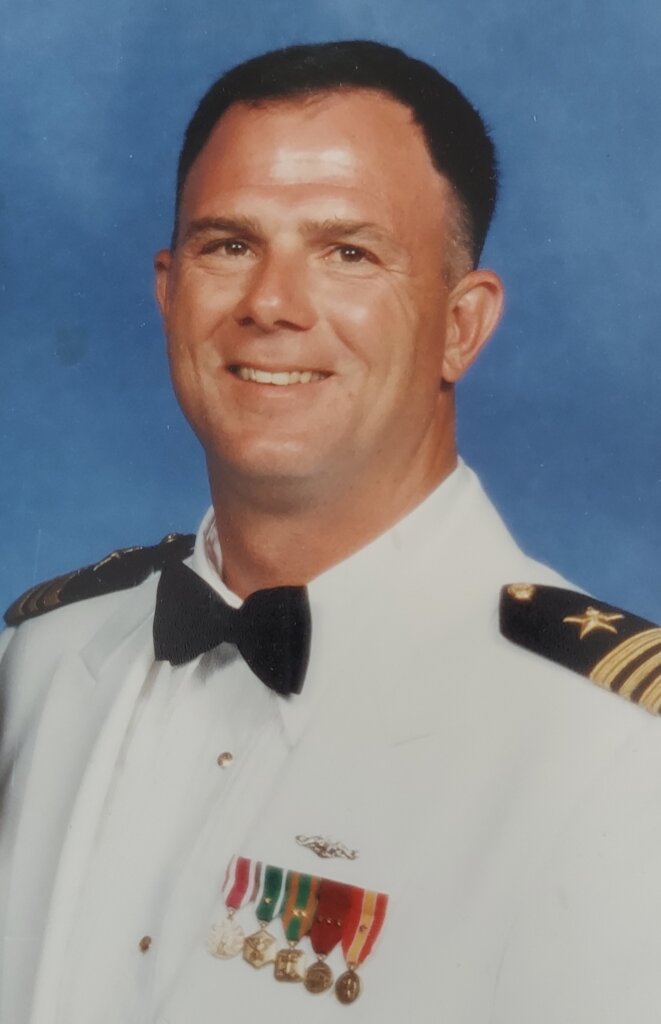
Dan’s ascent to officer rank was a journey of perseverance, learning, and leadership. It epitomized his dedication, the trust bestowed upon him by peers and superiors, and his commitment to lead with integrity and vision.
What influenced your decision to pursue officer training, and how did this choice align with your career aspirations in the Navy?
I had many supervisors during my career that followed the same path. It just seemed like the right thing to do and I knew I had a strong record of sustained superior performance. There was also a period of time when I was trying to make chief where the numbers were against me. It took me five attempts to make chief and it wasn’t due to lack of effort or qualifications. In a two year period there was only one advancement spot for a submarine nuclear machinist mate. I was stuck in a deep advancement valley that I feared would still be the case for future advancement to senior and master chief.
Of course, the increase in pay and benefits was a motivating factor.
I wanted to work for Naval Reactors but that was a blessing and a curse. It was a five year commitment and also meant I had to work in a shipyard. I had some shipyard experience at Electric Boat but wasn’t prepared for what my new oversight role at Pearl Harbor Naval Shipyard would entail. Every day was 14-16 hours plus calls at home throughout the night. I had to write a weekly letter to the four-star admiral in charge of Naval Reactors explaining what I had done the previous week to improve his program. It was intellectually challenging work. I was relieved when I fulfilled my commitment to NR and was able to don the uniform again. I was required to wear civilian attire (shirt and tie) while at NR because I was dual assigned to the Department of Navy and the Department of Energy. Also, since I was representing the four-star, he didn’t want anyone knowing what ranks we held because we were often junior to the submarine commanding officers we monitored. The tie let everyone in the shipyard know that we were one of the admiral’s men. I was elated to put my khakis back on and go back to sea on submarines. I was even happier when I retired from the navy so I could wear an aloha shirt to the office.
Essence of Naval Service
Dan emphasizes the essence of naval service as a deep-rooted commitment to the nation, its principles, and fellow servicemen. Beyond mere defense, it’s a dedication to values like discipline, integrity, and camaraderie. The legacy and honor of the naval service act as guiding pillars throughout service.
Can you recall a specific moment in the Navy that significantly influenced your career or personal growth?
Turbulent Seas and Internal Struggles
Beyond external challenges, Dan spoke of the internal battles sailors often grappled with – from homesickness to navigating interpersonal dynamics onboard. The sea’s vastness could evoke introspection, with sailors drawing strength from their training and each other.
There were many moments but my assignment in 1979 to the Machinery Division on the WWII-era aircraft carrier USS LEXINGTON (CVT-16) provided all the motivation I would need to make it through nuclear power training. I was fresh out of Machinist Mate “A” school so this was my initial fleet experience. The engine rooms and boiler rooms were incredibly hot and the only relief was standing directly beneath the ventilation ducting. At the end of each watch, your last four hours of logs had to be transcribed onto a clean set of logs because sweat caused the original log sheets to become blurry.
This was also my first experience with navy hazing rituals. I was gang tackled in berthing by my division and covered from head to toe in grease and Prussian bluing. I got in a few good punches but certainly got the worse end of the initiation. That was my first initiation but not the last. My Shellback and Chief initiations were of the ‘old school’ variety. They were ribald, disgusting, and fun but the navy has changed a lot since then. Probably for the better.
I learned a lot about the navy in those first months in the fleet and vowed to do whatever it took to succeed in the nuclear power program. I knew I would do anything to avoid returning to the engine rooms of the oil-fired navy.
Overcoming Challenges within the Navy
Dan’s nautical odyssey was punctuated by myriad challenges, from deciphering ship nuances to addressing operational dilemmas. However, a solid support framework, mentorship, and comradeship transformed these impediments into growth catalysts.
Were there challenging experiences that molded you as a sailor? How did you navigate them?
Getting through the first six months of the nuclear power training pipeline was, by far, the most challenging academic pursuit I have experienced. There were extremely fast-paced classes in math, physics, reactor principles, heat transfer/fluid flow, electrical theory, and chemistry. The classes were five days a week, eight hours per day. It usually took four or more hours to finish the daily homework and 8-12 hours of homework on the weekends. All of the material was classified so it had to be done in the schoolhouse. Students with poor grades were assigned mandatory study hours (usually 30-40 hours/week). I had decent grades (3.7 on a 4.0 scale) and avoided mandatory study but even above average students struggled with the sheer volume of the material. Many did not make the cut. Those that did make it (2.5 to survive) were reassigned to the prototype phase to continue training on a land-based operational reactor. I was assigned to the Trident submarine prototype in upstate New York where I finished at the top of my class. My assignment to the fleet was delayed for three years because I was retained as an instructor. My confidence was sky high after succeeding in such a demanding environment. The father of the nuclear navy, Admiral Rickover, had a quote that was inspirational and helped mold me for the rest of my career. He said, “Responsibility is a unique concept… You may share it with others, but your portion is not diminished. You may delegate it, but it is still with you… If responsibility is rightfully yours, no evasion, or ignorance or passing the blame can shift the burden to someone else. Unless you can point your finger at the man who is responsible when something goes wrong, then you have never had anyone really responsible”.
Did you have mentors in the Navy? How did they guide or inspire you?
I always looked up to the Chief Petty Officers that I served with in my first decade in the navy. Their ability to handle the technical demands of the job and train their reliefs simultaneously was impressive. The CPOs instilled the absolute necessity for integrity in all matters and the pride in doing your job to the absolute best of your ability. I’m reminded of another Rickover quote that applies. He said, “A good manager must have unshakeable determination and tenacity. Deciding what needs to be done is easy, getting it done is more difficult. Good ideas are not adopted automatically. They must be driven into practice with courageous impatience. Once implemented they can be easily overturned or subverted through apathy or lack of follow-up, so a continuous effort is required. Too often, important problems are recognized but no one is willing to sustain the effort needed to solve them”. I only met Admiral Rickover once but he was omnipresent in my career and a mentor for every nuke that has ever served.
How would you describe the essence of naval service to someone unfamiliar with it? What does it mean to you?
Serving in the navy requires surrendering to a cause that is larger than your own desires. Especially important in the submarine service, you must acknowledge that every member of the crew, from the Commanding Officer to the non-rated sailor, has an integral role in the warfighting capability of your ship. For me, the navy meant unlimited opportunity for a better life for me and my family. I was confident that if I performed each task to the utmost of my ability that I would not have to worry about my next assignment or promotion. I also felt strongly that the ballistic missile submarine’s primary mission of deterring nuclear war was necessary and admirable.
Emotions and Memories: The Lone Sailor Statue
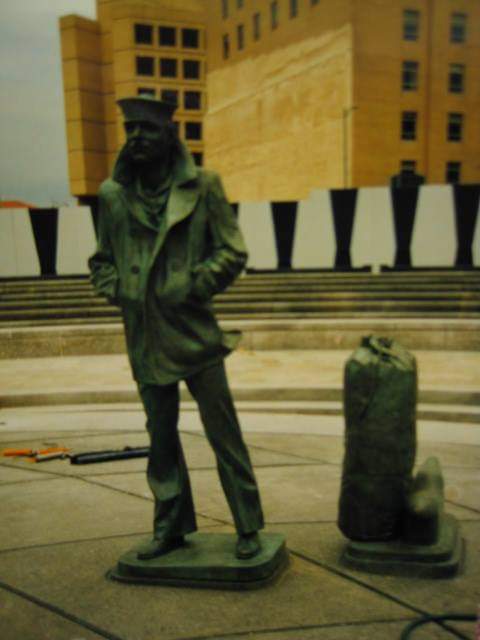
The Lone Sailor statue stirs a plethora of emotions in Dan, encompassing pride, nostalgia, gratitude, and belongingness. It epitomizes every sailor, especially those who’ve given their all. The detailed features reflect the life trajectory of a sailor, encapsulating common experiences and the undying navy spirit.
When you see the Lone Sailor statue, what emotions or memories surface? How do you hope others connect with it?
The prevailing emotion whenever I think about the Lone Sailor is pride. I’m proud that I was considered worthy of the honor to serve as the model but also proud of my forty-four years and counting of service to the submarine force. When I visit any of the statues I always experience a visceral reaction upon laying my hand on the peacoat. I feel a momentary Ponce de Leon Fountain of Youth rush of memories that transport me back to my twenties. That emotion is fleeting but it happens every time.
The thing that brings me the most joy is the universal acceptance of the Lone Sailor by all sailors, past and present. My mother recalled how many of the WWII sailors present at the dedication of the original statue in 1987 shed a tear upon seeing the statue for the first time. That’s the beauty of the design. Sailors see themselves in the face of that statue. Many people say that the sailor looks just like the sailor in their life when they were young. It is my sincere hope that sailors experience the same rush of memories I feel every time they see or touch the Lone Sailor statue.

Wisdom and Lessons
Dan’s naval tenure was a repository of wisdom and lessons, both explicit and tacit. From the importance of teamwork to the value of perseverance, the Navy imparted lessons that transcended the confines of the ship and resonated in all walks of life.
Guidance for Aspiring Navy Personnel
Aspiring Navy personnel receive sage advice from Dan to nurture adaptability. With inevitable challenges ahead, possessing the right attitude fosters growth. Dan accentuates seeking mentorship, embracing adversities, and unwavering allegiance to navy core values.
What advice would you offer to young individuals considering the Navy?
My first advice would be work hard in high school in order to expand your options. Take advanced placement courses whenever possible. Become involved in extracurricular activities including community service. The goal should always be college and a commission as an officer. If college isn’t in the cards, think very hard about what enlisted rating interests you the most and go for it. Have several alternates in mind because the ratings are not always open to everyone. Practice being early for everything. Remember the Vince Lombardi adage that if you are five minutes early you are already ten minutes late. I told my sailors that being on station early in a squared away uniform was half the battle. That approach is analogous to the tone set by UCLA basketball coach John Wooden on the first day of practice. The very first thing he taught his players was how to properly tie their shoes. Insisting, every day, on perfection performing this simple task set the foundation for everything else moving forward. One last Rickover quote fits well here. He said, “The Devil is in the details, but so is salvation.”
The Impact of the Lone Sailor Story
Stories possess the innate power to inspire, connect, and etch legacies, a sentiment echoed by Dan. The Lone Sailor narrative mirrors his voyage and resonates with countless navy personnel. Such tales enable the wider populace to fathom the gravitas of service and the ensuing sacrifices.
Reflecting on your service and connection to the Lone Sailor, how do you hope your story impacts others?
I hope my story affirms that discipline, dedication, and desire can take you anywhere you want to go. I suppose it also highlights the serendipitous nature of my selection as the model. My story highlights the philosophy that luck is when preparation meets opportunity.
Challenges and Growth
Challenges, both at sea and ashore, were omnipresent. Yet, for Dan, they were also catalysts for growth, shaping character, fostering adaptability, and honing skills. Overcoming them was a testament to the sailor’s spirit and training.
Challenges in Service
Can you share about any challenges you faced within the Navy, especially ones influenced by internal politics or dynamics?
One of the biggest challenges related to politics and dynamics occurred during my first year as a commissioned officer. I was selected as a Limited Duty Officer with a nuclear designator in 1992. I was interviewed at Naval Reactors (NR) by five different senior managers including Admiral Bowman. I was elated to be chosen to serve in the Naval Reactors Representatives Office (NRRO) at Pearl Harbor Naval Shipyard. I was assigned a desk directly outside the office of the civilian who had been in charge of the office for over a dozen years, Mike Hardin. Mr. Hardin was an intense man that screamed (A LOT!!) and chain smoked in the office despite it being against federal regulations. He was a presidential appointee for life in the Senior Executive Service (admiral equivalent) so, basically, untouchable. His management style can only be described as fear driven, intimidation reinforced by volume, and demanding and uncompromising when it came to technical matters. I spent several weeks getting indoctrinated and meeting the rest of the staff (all mustang officers too). I soon learned that I must be in the office hours before the boss (usually 0430) and the work day didn’t end until after he left for the evening. Getting across the breakers with Mr. Hardin was to be avoided at all costs. When I was finally summoned to his office, the conversation was terse and one-way. “Maloney, you don’t know anything about nuclear power and you know even less about how the shipyard works. Get out of my office and don’t return until your qualification program is completed”, he bellowed. I wondered what I had gotten myself into and would this be my life for the next five years. I learned many things from Mr. Hardin but the lessons were usually unpleasant. I will forever completely research the root requirement underlying any issue no matter how obscure or complex. Fortunately for me, I only had to spend one year under Mr. Hardin. Another member of the staff got so fed up with his treatment he resigned his commission and returned to enlisted status as a master chief. NR headquarters subsequently directed Mr. Hardin’s return to Washington DC. My new boss was also technically demanding but much better tempered.
Were there moments when you felt your contributions or experiences were overlooked or underappreciated? How did you navigate these feelings?
All in all, the NRRO job was meaningful and I felt I was making a difference. The biggest frustration was with headquarters personnel in DC. I was required to write a short letter to Admiral Bowman every week reporting what actions I had taken to improve nuclear work at the shipyard. Rarely NR headquarters action was needed but, when it was, “NAVAL REACTORS ACTION REQUESTED” was typed boldly at the top of your letter. In five years, I only requested NR action twice. The first instance involved my collateral assignment as the security manager. I questioned why there were pier-side security fences protecting the surface ships but none for the nuclear submarines. Due to space constraints, the submarine base had been granted a waiver decades ago but the provisions of the waiver were no longer being followed. Because of the shoddy physical condition of the secondary fencing cited in the waiver, I recommended the submarines be protected by new pier-side fences built according to the navy’s security regulations. NR headquarters denied my request stating I didn’t appreciate the obstacles to submarine maintenance that would be created by the fences. The other time I sought NR action was a request for changes to clarify a procedure that was always misunderstood by the submarine crews during dry-runs in preparation of the actual evolution. It was a high-risk evolution that had no margin for error. NR denied my request and simply stated the procedure worked as written. I questioned why I was their eyes in the field if my assessments were going to be ignored. I left the NRRO after fulfilling my five year commitment due to those cases and my early experiences with Mr. Hardin. I was subsequently successful in getting the procedure changed as a Lieutenant assigned to the COMSUBPAC staff. Fences were installed on the submarine piers in 2000, shortly after the bombing of the USS COLE in Yemen. Submarine maintenance continues unabated. I enjoyed the challenge of the NRRO job but it gave me a good insight into the NAVSEA bureaucratic hurdles I would eventually encounter during my civilian service in the federal government.
In hindsight, what lessons or insights have you drawn from these experiences, and how have they shaped your perspective on service and commitment?
My experiences over the decades serving the navy, both good and bad, reinforced the basic tenets of service I learned as a young petty officer. Live your life with integrity, it is your most important asset. Work hard, take accountability, and give every task your utmost effort. Always be on time and in a squared away uniform of the day. Most importantly, take care of your people.
